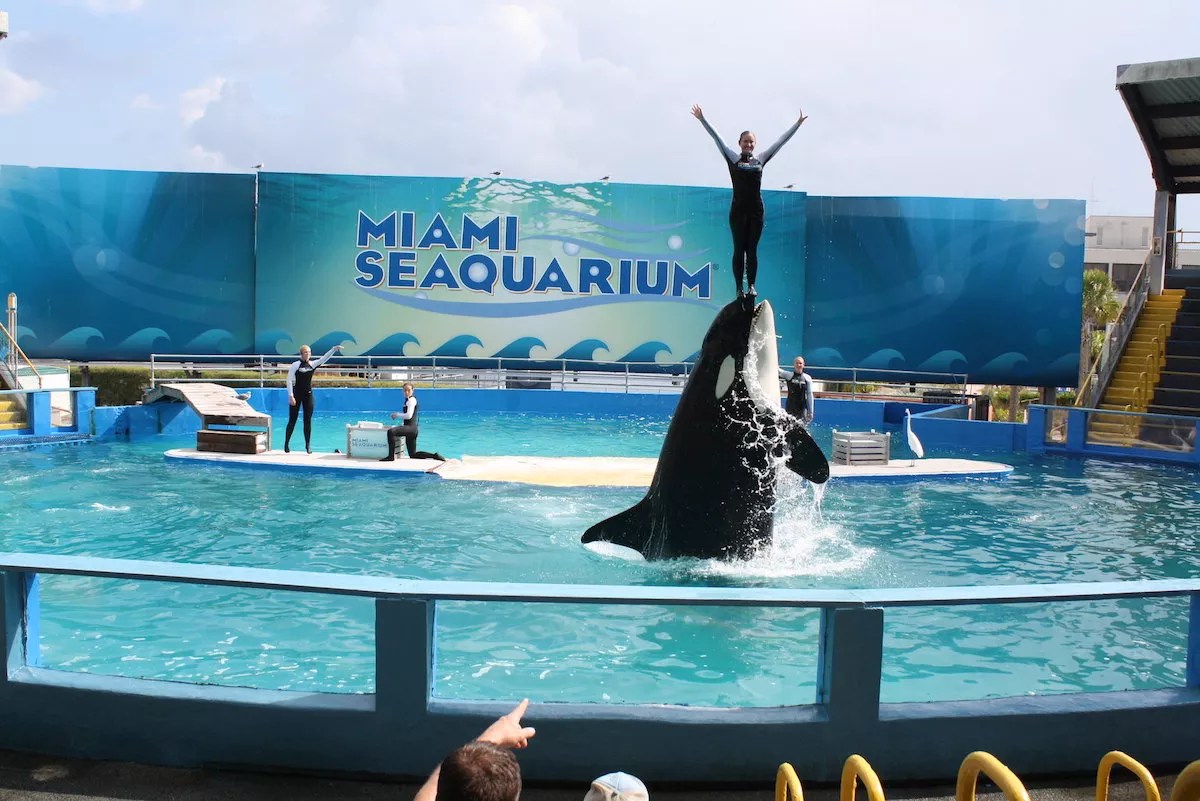

Audio By Carbonatix
It may seem like all splashes and smiles at the Miami Seaquarium, but conditions at the more than half-century-old marine park on Virginia Key are believed to be dire enough that the U.S. Department of Agriculture (USDA) announced last month that it was stepping in to conduct an investigation amid a series of animal deaths and failing park infrastructure.
This past August, Madrid-based Parques Reunidos, AKA Palace Entertainment, reportedly sold the Miami Seaquarium to a Mexican outfit called the Dolphin Company. But amid the ongoing federal probe, Miami-Dade County is delaying the park’s lease transfer until critical problems are resolved.
“How many more animals need to die before the Miami Seaquarium calls it quits?” PETA vice president Jared Goodman said in a statement. “This abusement park keeps shamelessly shoving incompatible animals into the orca Lolita’s abysmally small tank, which has now apparently led to Catalina the dolphin’s death. PETA welcomes the USDA’s investigation but warns that animals at the Miami Seaquarium will continue to suffer and die until the owners of this callous, exploitative operation finally release them to seaside sanctuaries.”
From the deaths of Coral the harbor seal to Catalina the Pacific white-sided dolphin, here are six findings that have blighted the Miami Seaquarium over the years.
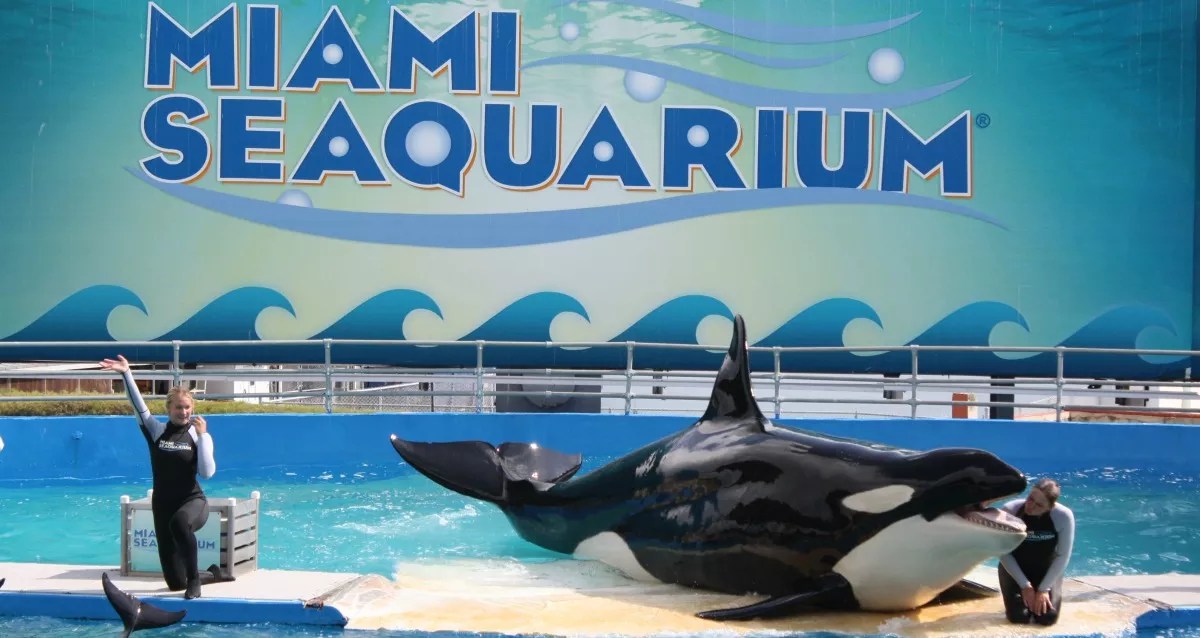
Lolita was brought to Miami Seaquarium in 1970.
Small and Outdated Enclosures
Let’s start with the most reported scandal at the Miami Seaquarium over the years: The orca Lolita, AKA Tokitae, is approximately 20 feet long and has lived in a “whale bowl” too small for her size for about 50 years. It is reportedly the smallest and oldest enclosure of its kind for an orca – a creature that regularly swims up to 100 miles in a single day in the wild. An audit by the USDA had previously revealed that the 80-by-35-foot tank may not meet the “minimum horizontal dimension” for such an animal as outlined in the federal Animal Welfare Act. Animal-rights activists hope Lolita will eventually be relocated to a bigger, more appropriate tank for her size or released into a protected sanctuary. PETA is in an ongoing lawsuit against the Seaquarium to free Lolita.
USDA inspectors found enclosures that house other marine animals to be in disrepair, specifically “several pools and surrounding structures.” The current condition of the pools allows for paint chips to be consumed by animals as they dislodge from the surface. A trainer reported that dolphins had brought over chips of paint during exercises. According to the USDA, the chips present a “health hazard” to animals if ingested.
Beyond the paint, the sea lions’ habitat was found to have “rust stains on the dry resting area and near drains within their pool.” Rusted areas cannot be properly sanitized and as a result can make animals sick.
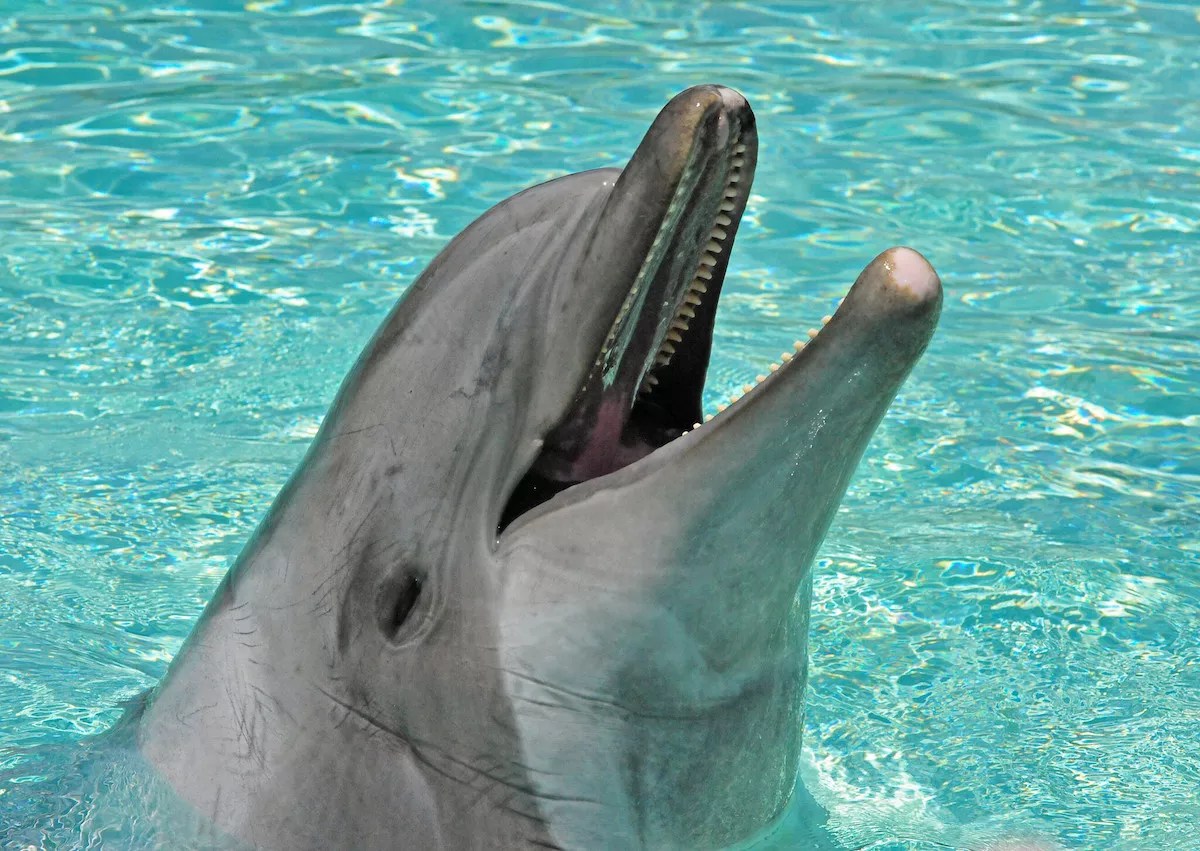
A bottlenose dolphin
A String of “Trauma-Related” Deaths
Between March 2019 and April 2020, five bottlenose dolphins and one baby California sea lion died at the Miami Seaquarium: 24-year-old Echo died of acute neck trauma in an incident that Seaquarium staff reportedly didn’t witness, 18-year-old Abaco drowned likely after becoming entangled in a fence that separated two pools, and 25-year-old Indigo died of muscle injury and hemorrhaging, which the Seaquarium noted was likely caused by another dolphin. The sea lion died from head trauma. The other two dolphin deaths were found to be from causes unrelated to trauma.
“It’s not normal to have this many trauma-related deaths in such a short amount of time,” Melanie Johnson, manager of PETA’s Animals in Entertainment campaign, told New Times last September.

Catalina was a Pacific white-sided dolphin, the species pictured in this photo taken at the Vancouver Aquarium.
Death of Lolita’s Tankmate, Catalina
Orcas are highly social creatures. Back in the ’70s, Lolita shared an enclosure with another killer whale named Hugo. However, since Hugo’s passing in 1980, amid a waning supply of orcas in the oceanarium market, Lolita has lived in the company of Pacific white-sided dolphins.
While so-called Southern Resident killer whales like Lolita are strict pescatarians, they can still hurt other marine mammals. This has historically been the case at the Miami Seaquarium as Lolita has reportedly unleashed beatings on her smaller tankmates on occasion. This behavior is believed to have caused the December 2021 death of Catalina, a 31-year-old Pacific white-sided dolphin who lived with Lolita. According to reports, Catalina died from trauma sustained after a moment of “aggression” from the orca.
Animal-rights activists blame the Miami Seaquarium for forcing Lolita to share the cramped enclosure with another, much-smaller creature.

Rotting fish
Feeding Spoiled Fish
Just like you wouldn’t feed your dog or cat spoiled pet food that might get them sick, you wouldn’t want to feed an orca rotting fish. Yet USDA officials found that performing mammals at Miami Seaquarium, including Lolita, were being fed rotting fish, causing intestinal issues that needed to be treated with antibiotics.
Lolita’s meal rations were also diminished, which is believed to have made the orca more agitated than usual. She wasn’t the only animal who went hungry. According to reports, other animals had their food portions reduced by half. Some of the park’s residents have even suffered from malnutrition, including one manatee in rehabilitation that died of emaciation.
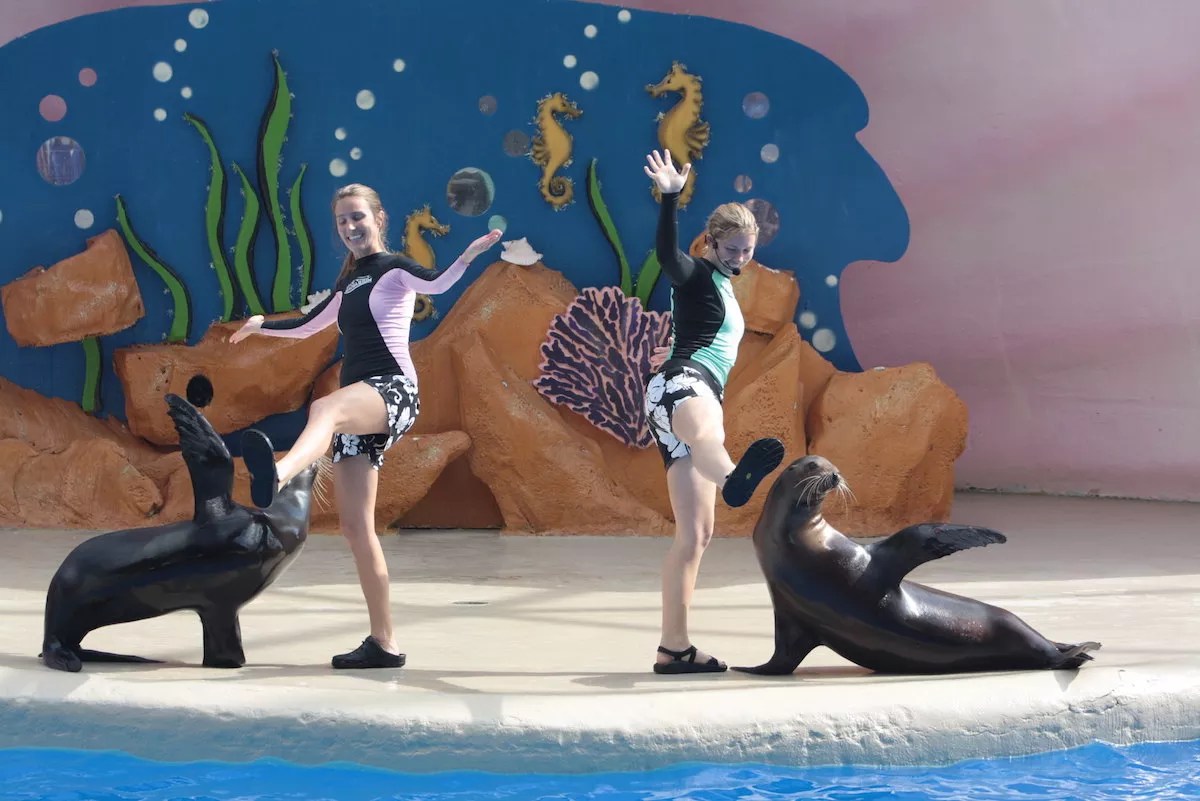
Seals at Miami Seaquarium
Poor Water Quality
Among the latest concerns from the USDA is the fact that several of the Seaquarium’s tanks are literally green from slime. The reason? Poor water flow. The problem has led to a sharp uptick in bacterial and algal growths, which aren’t just an eyesore but a legitimate concern for the animals in the facility. Among the latest animals to die in the marine park in the past year was Coral, a harbor seal that died from a “chronic infection,” likely caused in part by poorly maintained artificial habitats.
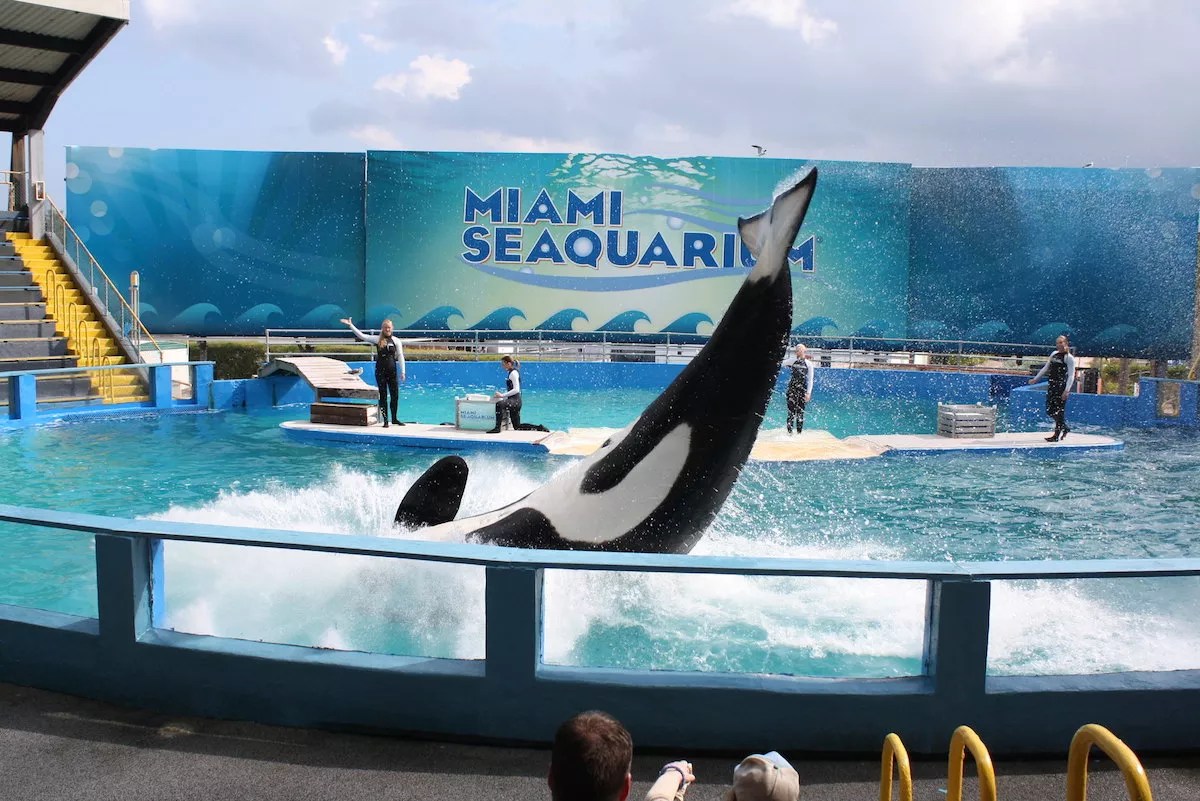
Lolita, specifically, was found to have performed head-in jumps with an injured jaw.
Performing Against Veterinary Opinion
In the USDA’s September inspection report, Miami Seaquarium staff were found in some instances to ignore veterinary opinion and perform with animals that had been recommended rest and recuperation following an injury. Lolita, specifically, was found to have performed head-in jumps with an injured jaw.
Lolita and a “number of bottlenose dolphins” were also found to have lesions on their eyes, which is believed to be a result of performing under the intense sun without enough shade.